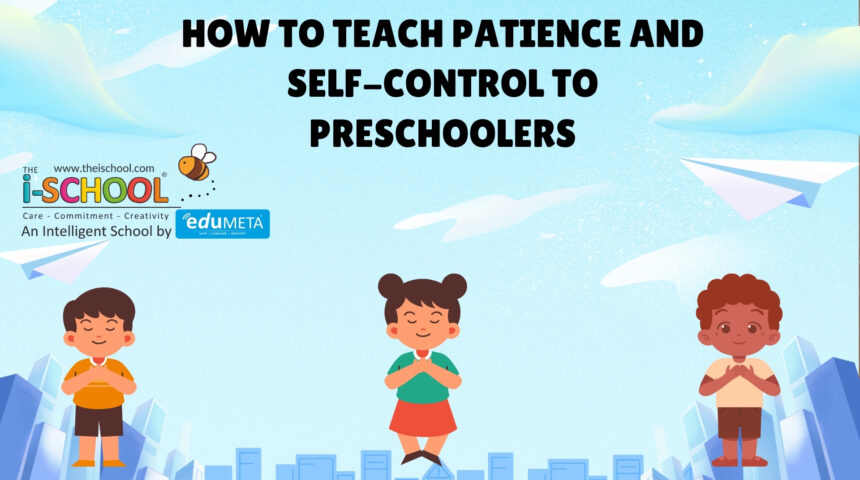How to Teach Patience and Self-Control to Preschoolers

Patience and self-control are important life skills that help children navigate challenges and build healthy relationships. For preschoolers, mastering these skills can be tough, but with the right guidance, they can develop the ability to wait, manage their emotions, and make thoughtful decisions. Here are some effective strategies to teach patience and self-control to preschoolers.
1. Model Patience and Self-Control
Children learn by observing the adults around them. Demonstrate patience in your daily interactions, whether it’s waiting your turn in line or staying calm when things don’t go as planned. Show your preschooler how to take deep breaths or count to ten when feeling frustrated. This helps them understand that patience is a skill everyone can learn.
2. Use Games to Practice Waiting
Fun activities can be an excellent way to teach patience. Games like “Red Light, Green Light” or “Simon Says” encourage children to pause, listen, and wait for instructions. These types of games help preschoolers practice self-control in a playful environment, which strengthens their ability to wait and follow directions in real-life situations.
3. Create Opportunities for Delayed Gratification
Help your preschooler understand the value of waiting by providing opportunities for delayed gratification. For example, when they ask for a treat, set a timer for a few minutes and explain that they can have it once the timer goes off. Over time, gradually extend the waiting period, helping them build their patience step by step.
4. Teach Mindfulness Techniques
Simple mindfulness exercises can help preschoolers develop self-awareness and self-regulation. Teach them how to take deep breaths when they feel upset or frustrated. You can also encourage them to practice “belly breathing” where they put their hand on their stomach and feel it rise and fall with each breath. Mindfulness activities help children stay calm and focused in moments of stress.
5. Praise Effort and Progress
When your child successfully practices patience or shows self-control, praise their effort. Positive reinforcement encourages them to keep developing these skills. For instance, if they waited patiently for their turn at the playground, acknowledge their effort by saying, “I noticed how patiently you waited, great job!”
6. Set Clear Expectations and Boundaries
Consistency is key in teaching patience and self-control. Set clear rules and explain the consequences for not following them. For example, if your preschooler wants to watch TV, let them know they can do so after they’ve cleaned up their toys. This helps them understand the importance of waiting and completing tasks before receiving rewards.
7. Practice Problem-Solving Together
Help your preschooler understand that challenges can be managed with patience. If they become frustrated when a toy doesn’t work the way they want, guide them through problem-solving steps instead of rushing in to fix it for them. Ask questions like, “What do you think we should try next?” or “How can we fix this together?” This teaches them how to stay calm, think critically, and work through obstacles.
8. Be Patient with Their Learning Process
Remember that teaching patience and self-control is a gradual process, especially for preschoolers. There will be setbacks, and that’s okay. Offer gentle reminders and continue practicing these skills consistently. With time, your child will develop better self-regulation and patience in various situations.
Conclusion:
Teaching patience and self-control to preschoolers is essential for their emotional and social development. By modeling these behaviors, using games, offering opportunities for delayed gratification, and providing consistent encouragement, you can help your child build these valuable skills. With practice, patience and self-control will become part of their everyday life, setting them up for success in both childhood and beyond.
